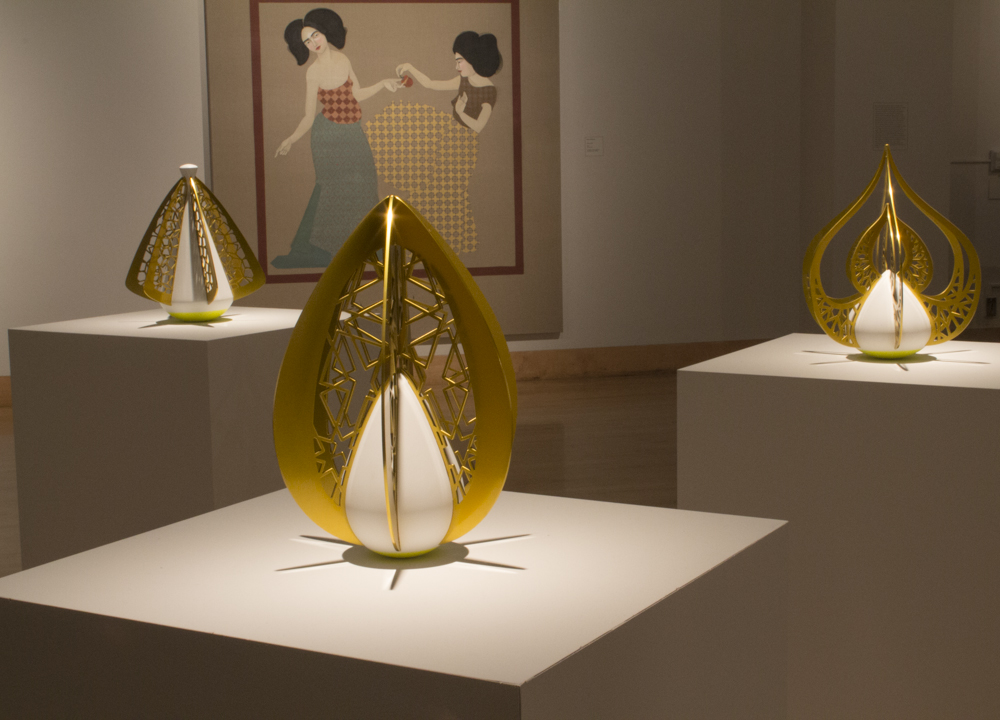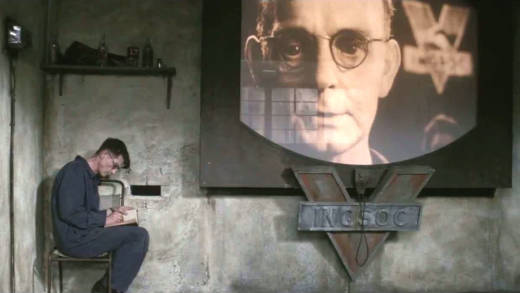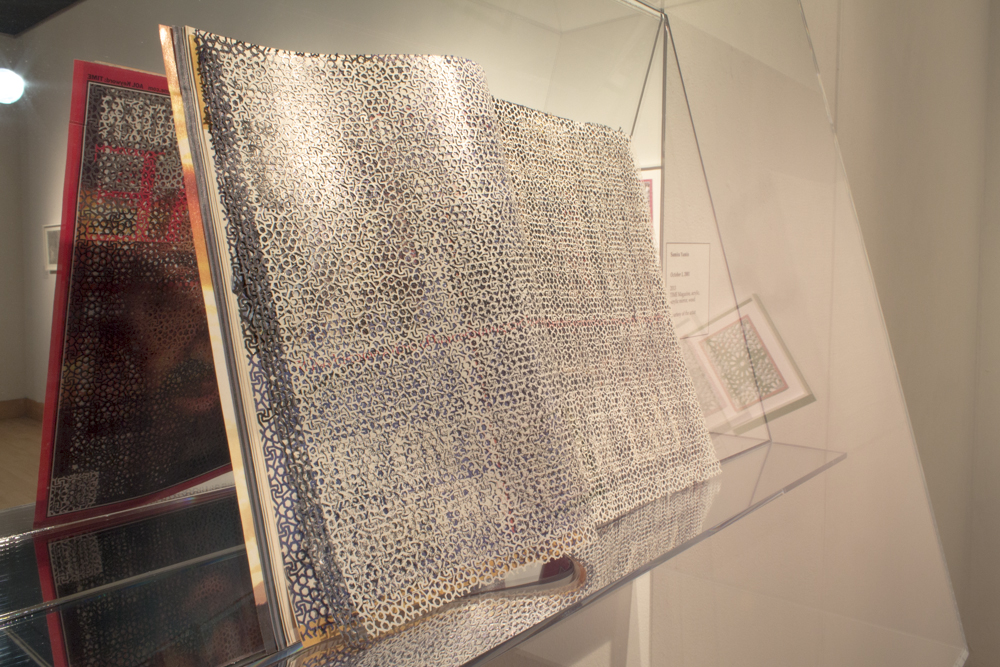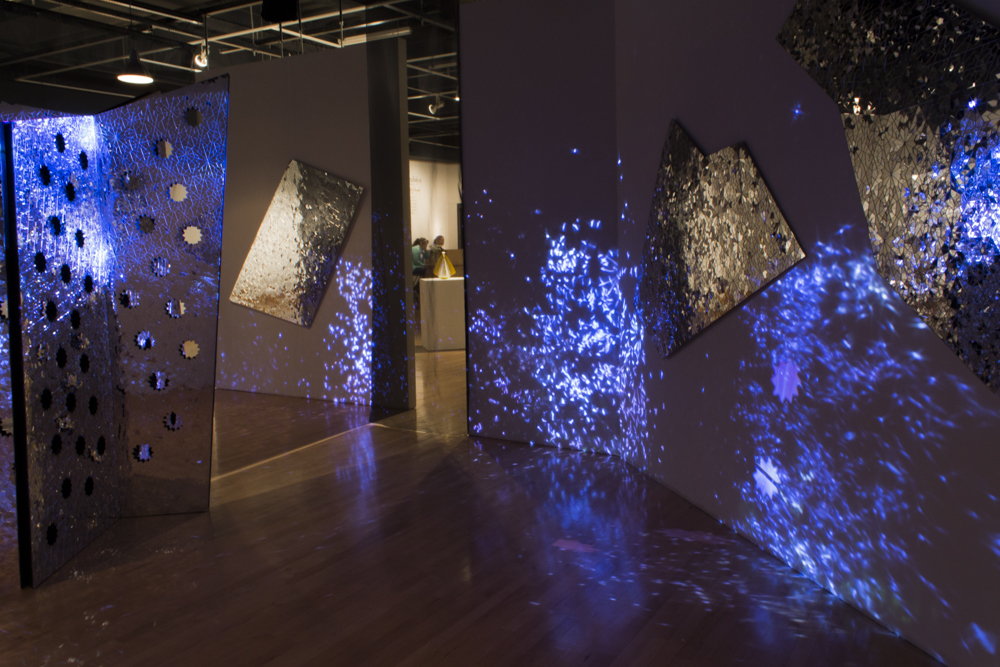What does it mean to look? And what does it mean to be seen?
These are two of the critical questions raised in Mashrabiya: The Art of Looking Back, an intimate, six-person exhibition now on view in the San Francisco State University (SFSU) Fine Arts Gallery.
The title Mashrabiya refers to the projecting latticed windows that are a familiar feature of domestic architecture throughout the Middle East and wider Islamic world. The windows function to protect inhabitants — primarily women — from public gaze while simultaneously providing a safe vantage point from which to view the public realm. Co-curators Santhi Kavuri-Bauer, Kathy Zarur, Sharon E. Bliss and Mark Johnson adapted the mashrabiya as a visual metaphor through which to think about social and political relations between East and West, and how much the West in particular has yet to learn.

Taraneh Hemami’s Bulletin, published in conjunction with the longform project Theory of Survival, establishes a loose context for the overall exhibition. Comprising critical points in Iranian and world history, Bulletin offers a more complete account of the country’s fraught passage through the 19th and 20th centuries, widening the otherwise narrow aperture through which Middle Eastern life is perceived.
Iran’s history does not begin with the Islamic Revolution (1978-79), but that is the primary event that informs almost all contemporary media portrayals of the country to this day. Hemami’s bulleted list, mirroring a mashrabiya in its layout, situates her native country and other Middle Eastern nations within the temporal spectrum of recent history to illustrate how little we know of a place otherwise relegated to “the axis of evil.”





